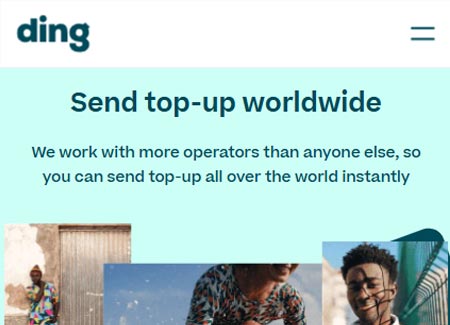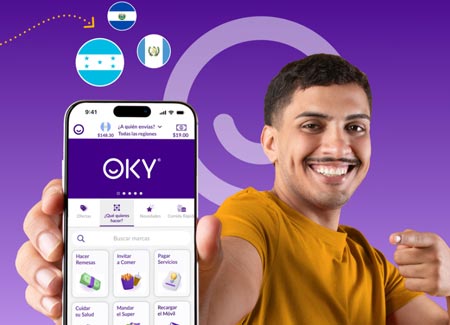
At a glance, remittances may seem like simple financial transactions—one-way wires, routed from immigrant workers in the U.S. to family members in Latin America and the Caribbean. But look closer, and they reveal something much more layered. Each transfer is a window into identity, resilience, and emotional intent. For marketers focused on multicultural audiences, remittances offer something even more powerful: insight.
They’re quiet signals—evidence of how consumers prioritize, adapt, and care.
REMITTANCES: A TRADITION THAT BUILDS ECONOMIC BRIDGES
In the 1980s, remittances from the U.S. to Latin America were relatively modest, totaling just a few billion dollars annually. By 2023, that number had grown to $155 billion, according to the World Bank1. For many countries in the region, these transfers became economic lifelines. El Salvador, Honduras, and Haiti all rely on remittances for over 20% of their GDP, a figure that underscores just how deeply personal transfers shape public stability1.
For decades, this money moved through storefront agents and cash-only corridors. The transaction might have been manual, but the motivation was always intimate—feeding children, paying for medicine, supporting elders. It’s not consumption. It’s connection.
ECONOMIC UNCERTAINTY AND POLICY SHIFTS IN THE U.S.
In 2025, the remittance landscape is facing stress from multiple angles.
The U.S. economy—still navigating inflationary pressure and cooling job markets—has put a strain on many working-class senders. At the same time, immigration enforcement actions have intensified. Deportation fears and the risk of detention have made informal earners more cautious. This combination has started to show up in the data.
In May 2025, Mexico’s remittance inflows fell 4.6% year-over-year, totaling $5.36 billion2. It followed an even sharper drop in April, marking the steepest monthly decline in more than a decade. The number of transactions also fell, though the average transfer amount ticked up slightly.
That’s not the full picture, though.
A TALE OF TWO REGIONS:
MEXICO SLOWS, CENTRAL AMERICA SURGES
While remittances to Mexico have cooled, other LAC markets have experienced the opposite. Early 2025 data shows double-digit growth in key Central American countries: Guatemala (+21%), Honduras (+20%), and El Salvador (+14%)3.
What’s driving the divergence? Fear, in part. Immigrants from these nations—many of whom face more tenuous legal status—are sending more money, more quickly, in case their window to do so closes.
“If you’re detained, you won’t be able to keep sending money. So your only option is to try to send everything you can now.”
— Manuel Orozco, Inter-American Dialogue
It’s a form of urgency rarely covered in consumer reports, but it’s real—and brands working with these communities need to understand its impact.
A NEW TAX ON THE HORIZON
Further complicating the picture is the passage of the One Big Beautiful Bill Act (OBBBA) in July 2025. A little-known clause in the final legislation introduces a 1% federal tax on remittances made via cash, money orders, or cashier’s checks4. While bank-funded and card-based transfers are exempt, the move could still affect millions of users who rely on cash-based services.
The tax won’t go into effect until January 2026, but the anticipation is already shaping behavior. Industry analysts warn of a possible shift to less regulated, informal methods if costs rise too steeply. It’s a real risk—one that speaks to the need for better options, not more barriers.
THE FINTECH RESPONSE:
MORE CHOICE, MORE CONTROL
Digital innovation is stepping in to fill the gap. Over the past five years, a wave of fintech startups has reimagined remittances—not just as money transfers, but as purpose-driven exchanges of value.
Brands like Remitly, Wise, and Sendwave have made speed and transparency the baseline. Others, like Ding and OKY, are stretching the definition of remittances altogether.
Ding specializes in mobile phone top-ups, allowing a father in Los Angeles to instantly recharge his daughter’s data plan in Guatemala City. In a world where mobile access is lifeline access, that’s no small gesture.
OKY lets senders prepay for goods and services in the recipient’s home country—groceries, pharmacy items, electricity bills—ensuring that value is delivered, not just cash.
These platforms prioritize ease, speed, and emotional utility. They understand that for many migrants, remittances aren’t just about sending money—they’re about staying involved in daily life, even from afar.
THE PLATFORM IS THE MESSAGE
User behavior is shifting in tandem with these tools. Younger immigrants are embracing app-based options. They want confirmation, flexibility, and clarity on fees. They also want optionality—a way to send $50 for tuition, not just $300 in cash. The growth of stablecoin-powered transactions and blockchain-backed services suggests this demand for flexibility will only grow.
Even legacy providers are adapting. Western Union, for example, is piloting stablecoin-enabled transfers in several Latin American corridors following recent U.S. regulatory changes5. Their goal? Faster, cheaper settlement that competes with crypto-native challengers.
Fintech isn’t replacing remittances. It’s redefining them.
WHAT THIS MEANS FOR MARKETERS
For marketers and advertisers—especially those focused on multicultural segments—remittances offer more than just an economic data point. They are powerful behavioral signals that reveal how people prioritize, adapt, and maintain emotional and cultural ties.
One of the most overlooked truths about the immigrant experience is this: leaving a country doesn’t sever connection—it often strengthens it. In fact, for many, the sense of responsibility to support loved ones back home becomes even more urgent once they settle in the U.S. The distance creates a new kind of closeness. Through every transfer, top-up, or delivery, they stay rooted—financially, emotionally, and culturally—in their place of origin.
This connection doesn’t just influence how people send money. It shapes how they spend, what they trust, who they listen to, and how they define value. It also informs the types of products and services they seek—whether it’s mobile apps that help them support relatives directly, or brands that reflect a deep understanding of dual-identity living.
Remittance users are:
- Digitally evolving. They’re adopting new platforms that offer transparency, convenience, and a stronger sense of control.
- Emotionally invested. Their transactions are expressions of care and commitment, not just financial utility.
- Culturally connected. Their actions are shaped by a strong link to home—and by a desire to make their presence felt across borders.
For brands that want to build lasting relationships with these communities, this means moving beyond translation or surface-level inclusion. It means recognizing that today’s immigrant consumer is living across two realities—and any brand that helps them navigate both, with dignity and relevance, will earn trust.
LOOKING AHEAD
The remittance market is shifting, yes—but it isn’t shrinking. What’s happening is a transformation in how cross-border support is expressed. More platforms. More control. More purpose.
For marketers, that means listening more closely. Because in every $200 transfer, in every top-up or food voucher, there’s a message. A story. A signal.
You just have to know how to read it.
Sources: 1. World Bank KNOMAD Migration & Development Brief 39 (2024) 2. Reuters, “Mexico Remittances Dip 5% in May as U.S. Mulls Tax” (July 1, 2025) 3. Washington Post, “Central American Immigrants Send More Money Home Amid ICE Crackdown” (July 13, 2025) 4. Marketplace.org, Summary of the OBBBA remittance tax (July 2025) 5. PYMNTS.com, “Western Union Earnings Show Remittance Headwinds as Migration Slows” (Q1 2025)




